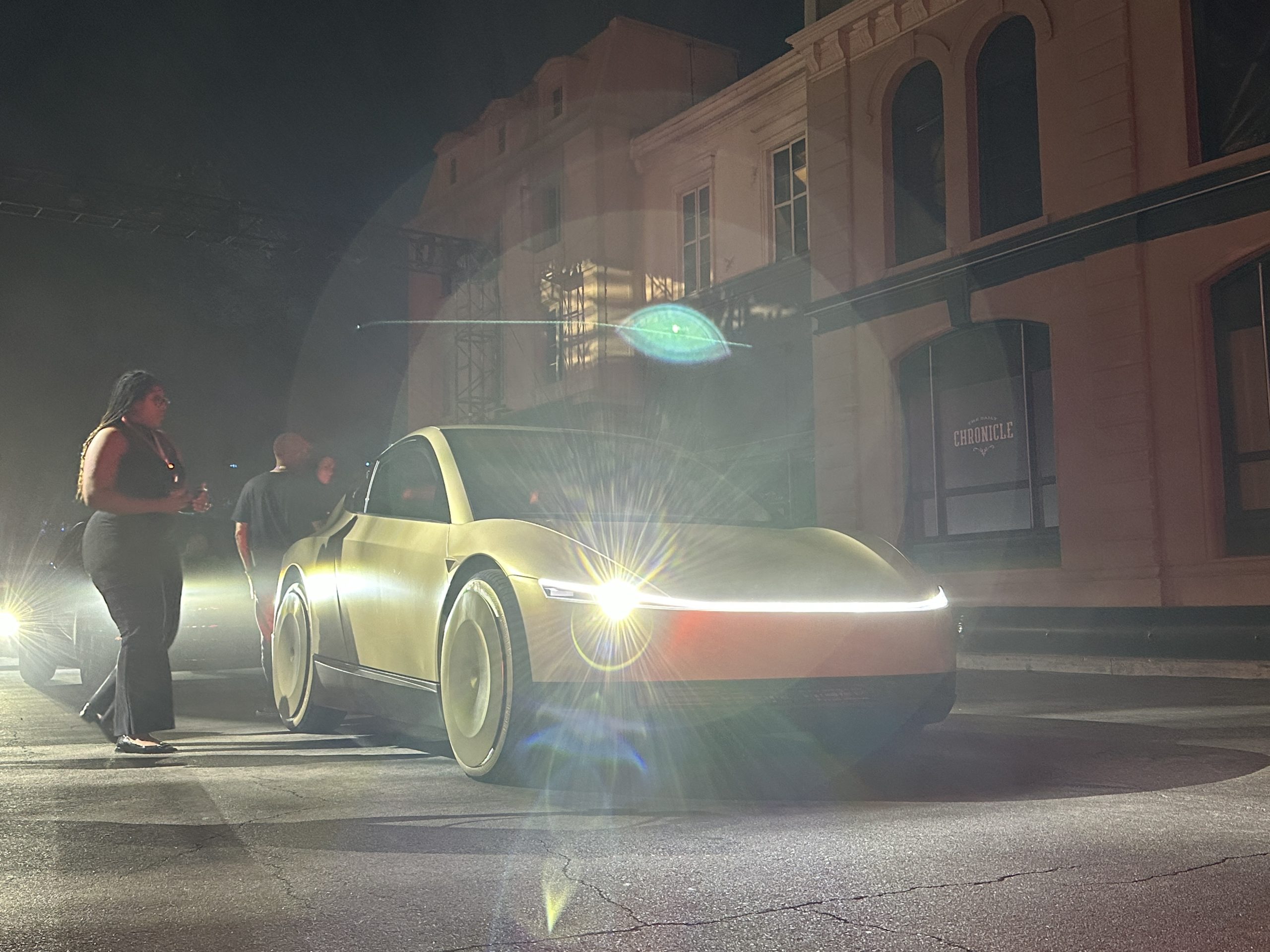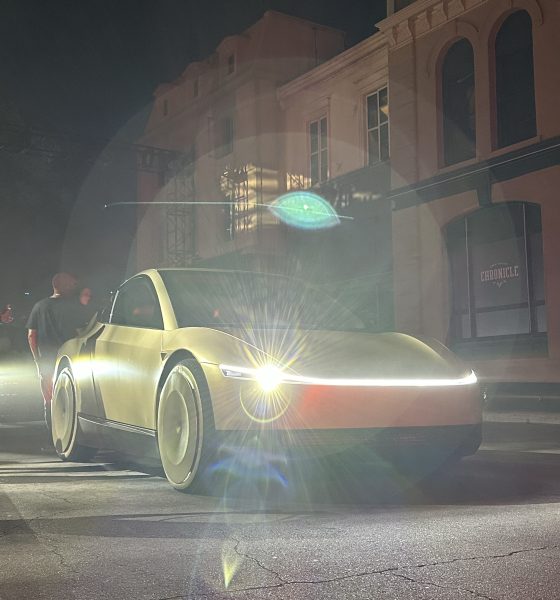If there were any complaints about Tesla’s “We, Robot” event, it was the fact that the occasion was very light on details surrounding the Cybercab. Fortunately, a good number of Tesla staff and even some executives were reportedly willing to provide some details about the upcoming vehicle.
In a post on social media platform X, longtime Tesla shareholder and owner-enthusiast Matthew Donegan-Ryan noted he was able to speak with Tesla Design Chief Franz von Holzhausen and Vice President of Vehicle Engineering Lars Moravy following the “We, Robot” event. The executives reportedly provided some insights about the upcoming vehicle, some of which were not mentioned in Elon Musk’s presentation at the occasion.
For one, there are reportedly no plans to make a Cybercab with a steering wheel and pedals. This is not surprising as such a vehicle would likely adversely affect the sales of the Model 3, Tesla’s second best-selling vehicle. It does, however, highlight the idea that Tesla is betting a notable part of its future on the Robotaxi and its potential to change the way people commute.
?Big Tesla Cybercab photo dump thread ?
PLUS more details from @larsmoravy and @woodhaus2:
– There are no plans to make a Cybercab with a steering wheel and pedals (demand for the Robotsxi version will essentially be unlimited). pic.twitter.com/RGdf6NgovJ— Matthew Donegan-Ryan (@MatthewDR) October 11, 2024
The Cybercab’s production will reportedly start in Giga Texas, before moving to other factories. The vehicle will reportedly share parts with the Model 3 and the Model Y, making it easier to produce and ramp. Even the Robovan will reportedly share a surprising number of parts from the company’s other vehicles. As for cameras, the Cybercab will reportedly feature the same layout as the Model 3 and Model Y, with the addition of a front bumper camera similar to the one fitted in the Cybertruck.
– All Teslas on the road running hardware 3 or 4 will be able to function as robotaxis without needing any hardware retrofitting. pic.twitter.com/QRHCfWUvy4— Matthew Donegan-Ryan (@MatthewDR) October 11, 2024
Quite interestingly, Donegan-Ryan mentioned in his posts that all Teslas on the road running Hardware 3 or Hardware 4 would be able to function as Robotaxis without needing any hardware retrofits. These exact claims were echoed in a video posted by Tesla owner Kim Java, who was able to conduct a brief interview with von Holzhausen and Moravy following Musk’s keynote. In her interview, Java asked if her 2018 Model 3 with Hardware 3 could run as a Robotaxi. The executives confirmed that yes, such a vehicle could operate as an autonomous car.
– Cybercabs will not have Tesla logos (like Cybertruck). Everyone will know it’s a Tesla by the design. pic.twitter.com/J9HgWXpFcs— Matthew Donegan-Ryan (@MatthewDR) October 11, 2024
Interestingly enough, the Cybercab will reportedly follow in the Cybertruck’s footsteps when it comes to branding, with the vehicle not having a single Tesla badge. This is quite a bold decision, though considering that Tesla plans to mass produce the Cybercab in very large quantities, a badge for the vehicle may not be needed at all. Just like the Cybertruck, people will know it’s a Tesla just by looking at it.
– I have never seen Franz and Lars as excited and positive as they were tonight. They both displayed a great sense of accomplishment. pic.twitter.com/OdVw6Qs2TG— Matthew Donegan-Ryan (@MatthewDR) October 11, 2024
The Cybercab will reportedly feature just three interior buttons, comprised of two window switches and a dome light switch. Every other feature that commuters wish to access or activate would be done through the touchscreen. Finally, the Cybercab will reportedly not be made with steel like the Cybertruck to keep costs low, and the vehicle’s inductive charging system might actually prove cost-effective because it would require fewer materials and cabling.
Watch Kim Java’s video of Tesla’s “We, Robot” event below.
Don’t hesitate to contact us with news tips. Just send a message to simon@teslarati.com to give us a heads up.

News
Tesla is not sparing any expense in ensuring the Cybercab is safe
Images shared by the longtime watcher showed 16 Cybercab prototypes parked near Giga Texas’ dedicated crash test facility.

The Tesla Cybercab could very well be the safest taxi on the road when it is released and deployed for public use. This was, at least, hinted at by the intensive safety tests that Tesla seems to be putting the autonomous two-seater through at its Giga Texas crash test facility.
Intensive crash tests
As per recent images from longtime Giga Texas watcher and drone operator Joe Tegtmeyer, Tesla seems to be very busy crash testing Cybercab units. Images shared by the longtime watcher showed 16 Cybercab prototypes parked near Giga Texas’ dedicated crash test facility just before the holidays.
Tegtmeyer’s aerial photos showed the prototypes clustered outside the factory’s testing building. Some uncovered Cybercabs showed notable damage and one even had its airbags engaged. With Cybercab production expected to start in about 130 days, it appears that Tesla is very busy ensuring that its autonomous two-seater ends up becoming the safest taxi on public roads.
Prioritizing safety
With no human driver controls, the Cybercab demands exceptional active and passive safety systems to protect occupants in any scenario. Considering Tesla’s reputation, it is then understandable that the company seems to be sparing no expense in ensuring that the Cybercab is as safe as possible.
Tesla’s focus on safety was recently highlighted when the Cybertruck achieved a Top Safety Pick+ rating from the Insurance Institute for Highway Safety (IIHS). This was a notable victory for the Cybertruck as critics have long claimed that the vehicle will be one of, if not the, most unsafe truck on the road due to its appearance. The vehicle’s Top Safety Pick+ rating, if any, simply proved that Tesla never neglects to make its cars as safe as possible, and that definitely includes the Cybercab.
Elon Musk
Tesla’s Elon Musk gives timeframe for FSD’s release in UAE
Provided that Musk’s timeframe proves accurate, FSD would be able to start saturating the Middle East, starting with the UAE, next year.

Tesla CEO Elon Musk stated on Monday that Full Self-Driving (Supervised) could launch in the United Arab Emirates (UAE) as soon as January 2026.
Provided that Musk’s timeframe proves accurate, FSD would be able to start saturating the Middle East, starting with the UAE, next year.
Musk’s estimate
In a post on X, UAE-based political analyst Ahmed Sharif Al Amiri asked Musk when FSD would arrive in the country, quoting an earlier post where the CEO encouraged users to try out FSD for themselves. Musk responded directly to the analyst’s inquiry.
“Hopefully, next month,” Musk wrote. The exchange attracted a lot of attention, with numerous X users sharing their excitement at the idea of FSD being brought to a new country. FSD (Supervised), after all, would likely allow hands-off highway driving, urban navigation, and parking under driver oversight in traffic-heavy cities such as Dubai and Abu Dhabi.
Musk’s comments about FSD’s arrival in the UAE were posted following his visit to the Middle Eastern country. Over the weekend, images were shared online of Musk meeting with UAE Defense Minister, Deputy Prime Minister, and Dubai Crown Prince HH Sheikh Hamdan bin Mohammed. Musk also posted a supportive message about the country, posting “UAE rocks!” on X.
FSD recognition
FSD has been getting quite a lot of support from foreign media outlets. FSD (Supervised) earned high marks from Germany’s largest car magazine, Auto Bild, during a test in Berlin’s challenging urban environment. The demonstration highlighted the system’s ability to handle dense traffic, construction sites, pedestrian crossings, and narrow streets with smooth, confident decision-making.
Journalist Robin Hornig was particularly struck by FSD’s superior perception and tireless attention, stating: “Tesla FSD Supervised sees more than I do. It doesn’t get distracted and never gets tired. I like to think I’m a good driver, but I can’t match this system’s all-around vision. It’s at its best when both work together: my experience and the Tesla’s constant attention.” Only one intervention was needed when the system misread a route, showcasing its maturity while relying on vision-only sensors and over-the-air learning.
News
Tesla quietly flexes FSD’s reliability amid Waymo blackout in San Francisco
“Tesla Robotaxis were unaffected by the SF power outage,” Musk wrote in his post.

Tesla highlighted its Full Self-Driving (Supervised) system’s robustness this week by sharing dashcam footage of a vehicle in FSD navigating pitch-black San Francisco streets during the city’s widespread power outage.
While Waymo’s robotaxis stalled and caused traffic jams, Tesla’s vision-only approach kept operating seamlessly without remote intervention. Elon Musk amplified the clip, highlighting the contrast between the two systems.
Tesla FSD handles total darkness
The @Tesla_AI account posted a video from a Model Y operating on FSD during San Francisco’s blackout. As could be seen in the video, streetlights, traffic signals, and surrounding illumination were completely out, but the vehicle drove confidently and cautiously, just like a proficient human driver.
Musk reposted the clip, adding context to reports of Waymo vehicles struggling in the same conditions. “Tesla Robotaxis were unaffected by the SF power outage,” Musk wrote in his post.
Musk and the Tesla AI team’s posts highlight the idea that FSD operates a lot like any experienced human driver. Since the system does not rely on a variety of sensors and a complicated symphony of factors, vehicles could technically navigate challenging circumstances as they emerge. This definitely seemed to be the case in San Francisco.
Waymo’s blackout struggles
Waymo faced scrutiny after multiple self-driving Jaguar I-PACE taxis stopped functioning during the blackout, blocking lanes, causing traffic jams, and requiring manual retrieval. Videos shared during the power outage showed fleets of Waymo vehicles just stopping in the middle of the road, seemingly confused about what to do when the lights go out.
In a comment, Waymo stated that its vehicles treat nonfunctional signals as four-way stops, but “the sheer scale of the outage led to instances where vehicles remained stationary longer than usual to confirm the state of the affected intersections. This contributed to traffic friction during the height of the congestion.”
A company spokesperson also shared some thoughts about the incidents. “Yesterday’s power outage was a widespread event that caused gridlock across San Francisco, with non-functioning traffic signals and transit disruptions. While the failure of the utility infrastructure was significant, we are committed to ensuring our technology adjusts to traffic flow during such events,” the Waymo spokesperson stated, adding that it is “focused on rapidly integrating the lessons learned from this event, and are committed to earning and maintaining the trust of the communities we serve every day.”










